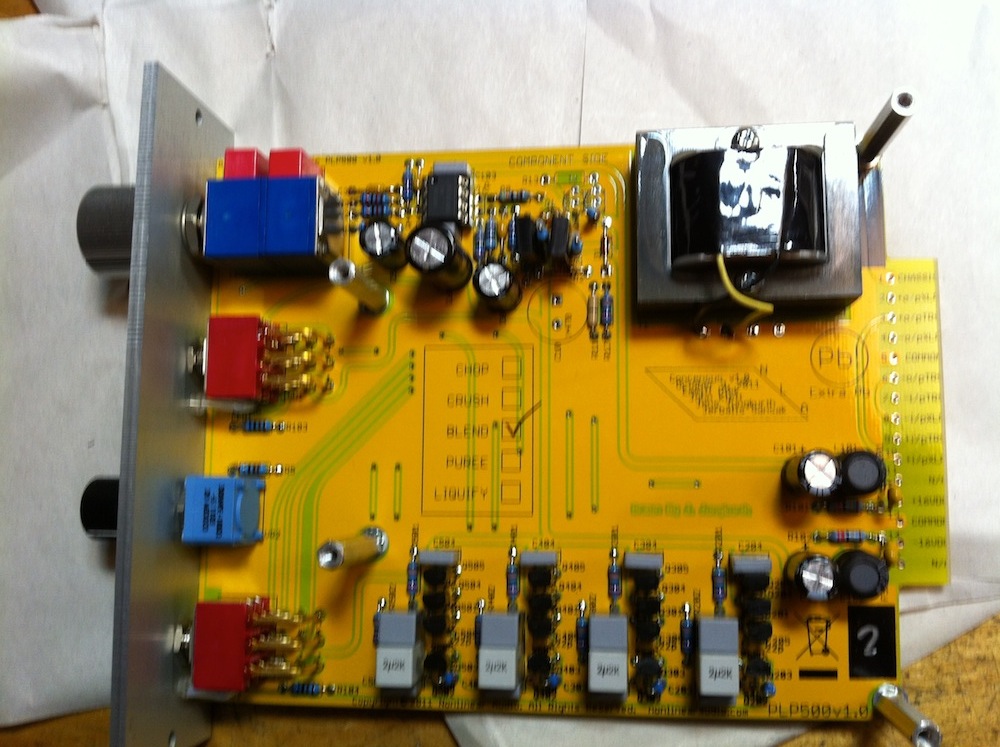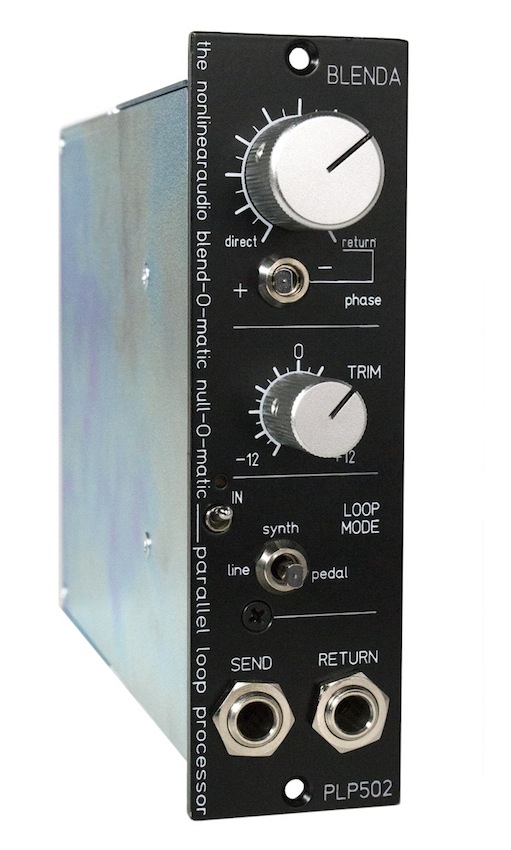NLA design duo Klett and Jungkurth originally developed the Blenda PLP500 module in 2011 as a simple means of adding a parallel insert processing loop to Purple Audio Sweet Ten racks. It was exhibited at AES NY in October of the year, after which a small batch on units was produced and sold. Unique features included Hi-Z balanced inputs (comprised of ultra-transparent incredibly quiet discrete transistor followers) which could accept any source device without loading, and polarity switch on the processed return input for nulling and phase cancellation effects.
Sales were limited as Blenda only worked in Sweet Ten racks (because of the second set of 1/4″ I/O on each Sweet Ten slot, which no other 500 series enclosure had) and Sweet Ten had not yet reached market saturation at the time. This meant that most 500 Series owners could not use a Blenda.
Furthermore, we noticed that most Blenda customers were using theirs primarily with instrument effects pedals, and this didn’t work very well as the original Blenda PLP500 had only a line-level send output.
Wishing to address these issues, NLA hired Eisen Audio staff engineer, Abby Echiverri, to do a complete re-design of circuits and redraw the PCB, which has resulted in the Blenda PLP502 module now shipping as of October 2014. The new Blenda features front panel normalling jacks which break connection to the rear panel jacks when a plug is inserted. Also, and most importantly, there are now three operating modes for the parallel loop: line, synth, and pedal. Line mode is balanced lo-Z line-level, whereas synth mode raises the send impedance to 1k (compatible with most analog synths and modular systems) and drops the operating level by -10dB. Pedal drops the operating level to -20dB and further raises the send impedance to about 3k, which is similar to many hum bucking pickups. In synth and pedal modes Blenda’s return input becomes a Hi-Z unbalanced D.I. input with corresponding makeup gain so that the loop is effectively unity gain regardless of operating mode. This lets you optimize (or creatively compare the tonality of) operating level/impedance and makes Blenda compatible with virtually any class of analog signal processing device. While the remaining PLP502 controls/functions are the same as PLP500, its I/O circuitry has been further optimized for greater headroom and transparency. It is fundamentally a very high-fidelity (in that musically-relevant kind of way) 2×1 mixer with several extra features and secondary utilitarian applications such as reamp plus DI.
Full Disclosure: Eisen Audio co-owns and shares staff/facilities with NonLinearAudio



